Coed Rheidol National Nature Reserve, Near Aberystwyth, Southwest Wales
Below: Coed Rheidol is a wonderful place to see spring flowers
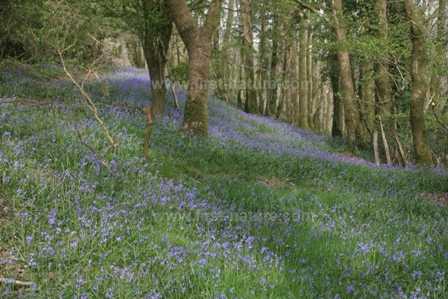
Designations: Rheidol Woods and Gorges SAC Coedydd a Cheunant Rheidol SSSI
These woodlands are set in one of the most beautiful parts of Wales - the Rheidol Valley.
The adjacent Ystwyth Valley is equally as lovely and is well worth a visit if you are in the area.
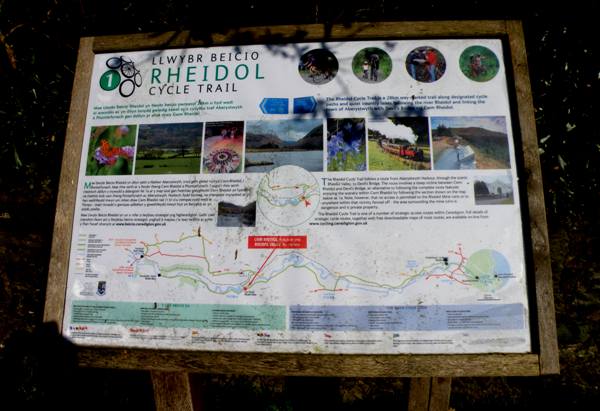
Coed Rheidol NNR is managed by Natural Resources Wales (NRW), but there are also several other woodland nature reserves in the vicinity of this NNR that are managed by the Wildlife Trust of South and West Wales (WTSWW).
Directions:
Grid Ref: For Devil's Bridge access SN 741770
There are several ways of getting into Coed Rheidol, but perhaps the best known place to start is Devil's Bridge, which is just outside Aberystwyth. Take the A487 from Aberystwyth in the direction of Cardigan (Aberteifi) and then turn left onto the A4120 towards Llangurig. Devil's Bridge is on this road.
Parking is very limited, but there is a free car park attached to a tea room and campsite a short distance beyond the bridge on the right-hand side. Entrance to Coed Rheidol has to be paid for at the Devil's Bridge entrance, but this includes access to two viewing points for the waterfalls, which are close to the bridge.
Alternatively, if you continue on the A4120 in the direction of Llangurig, there is an footpath into the woods from a layby on the left-hand side of the road at Ysbyty-Cynfyn.
One further entrance to this NNR is via a right-hand turn off the A44 from Aberystwyth towards Llangurig at the village of Capel Bangor. The road is signed to the Rheidol Hydro Electric Station, and it is a lovely journey along the River Rheidol towards the dam at the Hydroelectric Power Station. On the way you will pass an entrance into one of the WTSWW reserves called Pant Da, which is on the lef- hand side of the road. There is limited parking directly in front of the access gate.
Below: Devil's Bridge is one entrance to Coed Rheidol
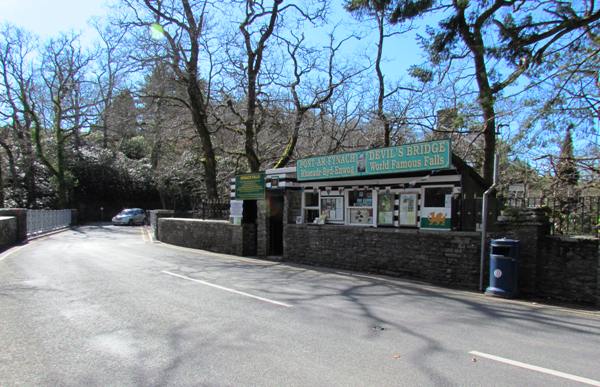
Access
There are numerous tracks and paths throughout the woodland, but they are nearly all steep and rocky and not suitable for wheelchair users or for people with prams or pushchairs.
Be particularly careful if you step off the paths through the woodland, because this was once a mining area and parts of the woods are still hazardous.
Facilities
There are no facilities on site but there are shops, cafés and toilets at Devil's Bridge and also at the Rheidol Hydroelectric Power Station Visitor Centre - see directions above.
Description of Site
Below: The River Rheidol and the surrounding woodland
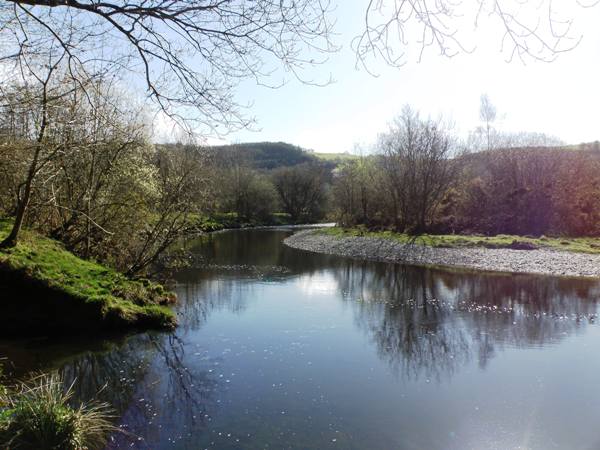
It's difficult to beat a springtime visit to these kinds of woodlands, of which we have so many in Wales and other parts of the UK, particularly in May when the Bluebells (Hyacynthoides non-scripta) are in flower. Britain is almost alone in the world in having such beautiful displays of Bluebells, which smell as good as they look. The plants are now protected under the Widlife and Countryside Act. Picking these flowers and stripping their bulbs would rapidly destroy this iconic feature of the British landscape.
The woodland is good for other wildflowers, too, and a visit in April will mean that you see dazzling displays of Lesser Celandine (Ficaria verna), Primroses (Primula vulgaris), Common Violets (Viola riviniana), Wood Anemones (Anemone nemerosa), and, in the wet flushes of the woodland, Golden Saxifrage (Chrysosplenium oppositifolium).
Later in the summer Yellow Pimpernel (Lysimachia nemorum), Common Cow-wheat (Melampyrum pratense), Welsh Poppy (Mecanopsis cambrica), Heather and Bilberry take over from the spring flowers, and in the Autumn it is time for the displays of fungi to impress us. The site, which has a high level of humidity due to the proximity of the river and the dense tree canopy which prevents moisture from evaporating, is also an excellent one for seeing liverworts, mosses, lichens and ferns that smother the trees, rocks and ground.
Below: Common Cow-wheat in flower at Coed Rheidol in summertime
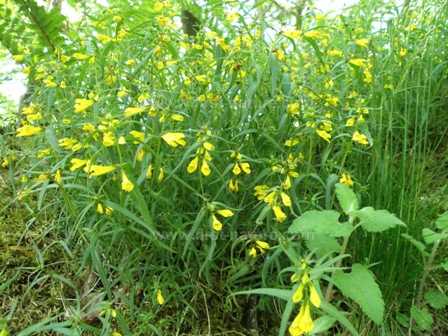
Any woodland such as this is good for the birds that visit us in spring and summer to raise their families, and Coed Rhiedol is no exception with nearly 80 species having been recorded in the woodland. Breeding birds include Bullfinches Pyrrhula pyrrhula, Pied Flycatchers Ficedula hypoleuca, Redstarts Phoenicurus phoenicurus, Tree Pipits Anthus trivialis, and various warblers. Birds of prey that you can expect to see in the area include Red Kites Milvus milvus and Buzzards Buteo buteo with the occasional Goshawk Accipiter gentilis having been recorded from time to time.
Many people visit this part of Wales to fish in the rivers, and the Rheidol and Ystwyth rivers both have stocks of resident Wild Brown Trout Salmo trutta; however, the Ystwyth and Rheidol are probably better known for those trout that go to sea each year (Sea Trout) and return in the spring and summer to spawn. Both of these rivers also have small but dwindling stocks of Salmon Salmo salar which will, no doubt, dwindle even further as climate change takes its toll. If you are lucky enough to catch one of those it is crucial to return it (along with the larger Sea Trout) in order to preserve stocks for the future.
Another wonderful creature you may see if you are near the rivers and sit quietly is an Otter Lutra lutra, although they are very shy and we more often know of their presence because of their footmarks in muddy edges of the banks.